European Canning Jars with gasket and metal clips
A month or two ago while surfing the internet, I found an european manufacture of really beautiful canning jars. The had decorative, tulip shaped, juice jars and even asparagus jars. I was SURE that I bookmarked the site, but now I can't find it. Does anyone know who the manufacture is? I found them through Lehman's, but the site I had was only for the manufacture's canning products. Lehman's, of course, doesn't say who makes them and their prices are higher.
Thanks for any help!
Bellatrix
Here is a link that might be useful: What the jars look like
Comments (56)
gran2
16 years agoMy daughter spent a year in Germany as an ag exchange student. She brought some of the jars home with her as a gift to me, and had used them there. I agree that they're beautiful, but they certainly don't fit well in the canner. I've used them for special things-in the pressure canner also - and had good success. The juice jars are beautiful for syrups. They also come with a few plastic snap-on lids which make them wonderful for fridge storage, so I justify them that way! btw, our extension educator isn't fond of them -- I'm sure because they're rubber rings/clamps -- and doesn't allow them in competition at the fair. s'okay, they're on my shelf. Thanks for the tip about the tabs pointing down. I'd missed that.
readinglady
16 years agoI just spoke to Weck on the phone. I'd placed an order, including the small snap-on lids. Those are out of stock stateside and they don't know when more are coming in. That was disappointing.
Carol
Related Professionals
Camas Landscape Architects & Landscape Designers · Sahuarita Landscape Architects & Landscape Designers · Washington Landscape Architects & Landscape Designers · Bainbridge Island Landscape Contractors · Lady Lake Landscape Contractors · Stallings Landscape Contractors · West Haverstraw Landscape Contractors · Franklin Roofing & Gutters · St. Louis Roofing & Gutters · Burlington Roofing & Gutters · Weehawken Roofing & Gutters · Foley Driveway Installation & Maintenance · Morgan Hill Driveway Installation & Maintenance · Park Ridge Driveway Installation & Maintenance · Mount Vernon Driveway Installation & MaintenanceSuzyQ2
16 years agoI also have some Weck jars. I ordered them because they are so pretty. But, as a newer canner (3 yrs now), they stress me out. They are pretty difficult to get in/out of the canner. I also spent the better part of a day making caramelized onions...watched the jars seal with pointing down rings....only to discover the tops lifted right off 2 out of 4 of the jars a week later. Such a disappointment. The jars are very pretty, but they definitely do take more attention/skill.
ksrogers
16 years agoI would assume that you would soak the rubber rings in hot water prior to placing on the jars. As to difficulty getting out of a canner, you can use a canning rack that will hold a batch, and it has a handle on the top to lift the whole batch out at once. Also, because they do have a flared lip, I think the canning tongs that are made by Ball will grab these jars as well as regular Ball types.
Here is a link that might be useful: Here is a US source for the eurpoean jars
readinglady
16 years agoThanks for the reminder about Lehmans. I see they do have the small lids in stock. They are a good company to do business with.
As for the jars not sealing, as Ken mentioned, I do heat the rubber rings as one would standard lids. The jars are more troublesome; if your canning rack has dividers, these European jars do not fit in well.
I still love them for the look. For special gifting they are particularly attractive.
Carol
SuzyQ2
16 years agoI'm pretty big in following directions to the letter (e.g. soaking the rubber rings per directions). As for the rack, nope....it doesn't easily fit these jars....nor does the Ball lifter. I ended up using one of those silicone gloves. Weck does sell their own.
I really do like the look of the jars and will continue to use them (I probably have 15 or so of them in different sizes).....I'm just saying they caused me a little more stress than the standard jars. I've only had 2 jars fail to seal with Ball, etc. jars in 3 yrs, but had 2 out of 4 in one session with the Weck. If I were just starting out, I'd probably wait to use them until I had a little more experience under my belt.
mellyofthesouth
16 years agoI just looked on the Dutch weck site and couldn't find the plastic lids there right now. It does appear that Lehman's has them in both the small and wide mouth size. (Btw, there is also a middle sized lid. I have some of each.) I'm sorry to hear that you had trouble with them. When I ordered more of the jars I use for salsa, I broke down and ordered their lifter. It works nicely for the wide mouth jars, but now as well on the smaller ones. I use my regular lifter for those. You are correct that they are a little more troublesome to fit in the canner. I use a pressure canner rack in the bottom of a stock pot. Sometimes I end up using a cake rack to make two layers of the wider/shorter jars.
ksrogers
16 years agoHere is another link to many unusual jar sizes, shapes and capacities. Its kind of like Amazon.com, but has many different brands of jars from all sorts of companies.
Here is a link that might be useful: Canning jars
readinglady
16 years agoI do think once you become accustomed to them, they seal as reliably as any other canning jar. I've not had any failures with the Weck jars.
But we were still using bail jars with rubber rings when I was young, so the method wasn't unfamiliar.
Carol
lanccopacanner
15 years agoHaving canned for decades (about 100/year), I strongly recommend that new canners work with us old vets. Canning is a social occasion. It is a relaxing and fun activity, that should not have stress! You can find us through your church newsletter or the Ag center. We are very happy to help out.
The Weck system is just as good as the band system. At the beginning of WWII the clamp system was attempted, and was scrapped for the band system even though it took more metal. But, the Weck clamps are much stronger and perfectly reliable. As for the lightening or bail jars ("perfect the seal") and the zinc caps, I never knew anyone who had any trouble, but I would not use them for pressure canning (PH over 4.6) as botulism is tasteless and odorless, and the vacuum loss or pressure is not that easy to detect in the lightening and ZN systems.digdirt2
15 years agoGood advice lanccopacanner with a couple of provisions. ;)
First, that the "old vets" have kept current on the guidelines rather than just "doing it the way we have always done it". That can be dangerous and passing on old methods of doing things that are no longer approved does a disservice to those just learning to can.
Second, recognizing that the use of the Weck system and similar products not to mention the zinc lids, while still used in some parts of the world, are no longer approved for use in the US and haven't been for many years. It is important that new canners are provided with that info so that they can make an informed choice as to the equipment they will use.
Dave
readinglady
15 years agoDave, as an "old vet" myself I agree that it's important to differentiate between canning experience and canning knowledge. There are a lot of people out there, both old and young, who have not kept up with recommendations for safe canning practices.
The NCHFP surveyed home canners in 2000-2001 and in that survey 39% boiling water bathed vegetables and 15% open kettle canned them. That's very scary.
While I agree that zinc lids and old bail jars should be avoided, I disagree on the Weck jars. Although I've only used Weck jars for high-acid jams and jellies, I wouldn't hesitate to use them for other canning applications. Weck is as respected in Europe as Ball/Bernardin is here. In fact, in Europe canning is called "einwecken" because the company is so associated with home food preservation.
I can only wish Ball jars were still as heavy and thick and resistant to chipping as Weck jars are. My reasons for not using them for broader canning applications is 1) time - the clamp system is unwieldy and takes longer than the convenient two-piece lids 2) expense. If you buy Weck jars for use here in the U.S. or Canada, be prepared to spend gobs of money.
Realistically, unless you're a "boutique" canner producing limited numbers of jars for yourself or gifts, it's just not time or cost-effective to use Weck jars. Nobody's going to buy Weck to can 500 liters of peaches.
But I have no trust issues with Weck jars. If I were in Europe, I'd use them with confidence. (Weck recommends 3 clamps rather than 2 for pressure-canning.)
Carol
digdirt2
15 years agoYou are right of course Carol. I have no issue with Weck either - other than the cost - and they are attractive. But the rubber seals/glass lids/bail jars do have a higher documented incidence of seal failures too.
So for that reason I don't think their use should be encouraged for new canners. At the very least the learning canner needs to be appraised of the fact that they are no longer USDA/NCHFP approved - then they can decide. ;)
Dave
PS: I know you know this but if anyone else wants to review the current policy on them I linked it below.
Here is a link that might be useful: Equipment and Methods Not Recommended
readinglady
15 years agoI do agree that Weck jars are more difficult to use and the novice should avoid them for that reason. Those new to canning have enough to worry about without that.
However, just as a reminder, Weck jars use a clamp system, not a bail system, which is specifically not recommended. I don't think the USDA has assessed the Weck design, one way or the other. The Weck company also says that bail jars are unsuitable for canning; they are adamant that their clamps are far safer than bails and have been for 90 years. But, I have not been able to find any statistics on the reliability (might if I could read German), though seal failures with their design are as easy to identify as with two-piece lids.
Still, you won't get any argument from me on the wisdom of sticking with the tried-and-true on this side of the ocean.
Carol
flora_uk
15 years ago"In fact, in Europe canning is called "einwecken" because the company is so associated with home food preservation"
Can I just have a little grumble here please? Only in German-speaking countries is the term 'einwecken'used. Europe is made up of many countries, languages and cultures. We have much in commmon but we are all different.
readinglady
15 years agoYou're entitled to a grumble. I didn't intend to step on toes. In future I will be sure to aim for greater precision.
Europe is made up of many countries, languages and cultures.
That didn't need saying.
Carol
flora_uk
15 years agoDon't worry Carol. My toes are not that sensitive. As I said, it's just a little grumble, based on a common generalisation. Not a big deal. Compliments of the season. Flora.
p.s. We always used 'Kilner' jars here but it looks as if they are no longer made and Weck and Leifheit seem to have taken over.
SuzyQ2
15 years agoI suppose it's a little like the rest of the world assuming that every state in the US thinks alike ;-) I read some of the comments here in Harvest from folks out east or west or south US and think to myself, my produce/garden/stores, etc could not be more different....but the rest of the world seems to classify us as one. So it goes....
sinclair_naturewithme_com
14 years agoI am new to home canning this year, and here is the reason I will be using Weck. ALL metal lids on all other brands of canning jar contain BPA (bisphenol-A) which has been linked to all kinds of neural difficulties (in children) and is now banned in children's products in the U.S. It leaches out at high temperatures when in contact with food (like during the canning process?) and then is in your food. FDA says small amounts are safe, but I am not so sure. With Weck jars, this will not be a problem.
Here is a link that might be useful: Nature With Me
readinglady
14 years agoWell, while I acknowledge the concerns about BPA and the importance of supporting further research, I'd have to mortgage my house to replace all my canning jars with Weck.
Carol
digdirt2
14 years agoALL metal lids on all other brands of canning jar contain BPA (bisphenol-A)
And your documentation to support this claim is.....what? All the undocumented claims made on the various "mommie and me" websites?
But if, assuming the claim is true, how do you balance the potential threat of a small amount of BPA which has minimal if any contact with the food to the very real and lethal threat of botulism and other bacterial diseases resulting from improper or incomplete seals that may be more common with Weck?
Gee, I wonder if the Weck sealing bands might not have BPA in them?
Dave
readinglady
14 years agoWell, actually, Ball (Jarden) acknowledges there is a small amount of BPA in their metal canning lids, so she's right in that regard.
What I haven't figured out is whether there's actual contact with the food. BPA helps prevent corrosion. If canning companies don't use BPA, what do they use?
Weck jars use glass lids and rubber rings and have said there's no BPA.
I think it's a matter of assessing risks. So far I haven't found enough information to gauge one way or the other. But I'm guessing there's minimal contact of food with the lid (assuming one follows headspace recommendations) and since I still think home canning is far healthier than a commercial product, I'm continuing to use the lids.
I've seen online that some people have decided to return to paraffin and are searching out old bail jars. I don't see those options as improvements.
There's always something new to panic about.
Carol
Here is a link that might be useful: Jarden on BPA
digdirt2
14 years agoThere's always something new to panic about.
True Carol but common sense has to prevail as I'm sure you agree. One has to be a bit selective about the things they panic about. And they should balance that inclination to panic against the risks of the alternatives.
As I said, the very low risk of the possible exposure to a small amount of BPA vs. the risks associated with the alternatives just doesn't warrant change IMO much less panic.
But unfortunately far too many times panic is uninformed or even grossly misinformed and then spreads on the web like wildfire. That serves no purpose.
EX: the mothers who post on some of these websites and insists that her baby food be canned only in Weck jars but then buys store foods treated with herbicides and ethylene gas to make that baby food and supplemental jars of baby food canned in commercial jars with the same BPA in the lid sealant.
Where is the sense in that?
Dave
swineinsanity
14 years agoI have seen them at McLendons Hardware...www.lehmans.com. Both are USA companies.
bejay9_10
14 years agoI ordered some small sizes from Weck but so far haven't used them. In September, I usually can fruit - and intended to use them for juices.
Thanks for all the "low-down" on them. Can't comment on them so far, other than they present a slight storage problem, a lot of extra lids, clamps, rubbers, etc., to find room for in my pantry. Space is becoming rather dear -ya know.
Can't wait to try them - tho.
Just my 2 c's.
Bejay
espresso
13 years agoDave, and anyone else.....
>"Second, recognizing that the use of the Weck system and
> similar products not to mention the zinc lids, while
> still used in some parts of the world, are no longer
> approved for use in the US and haven't been for many
> years."I'm German, and grew up with the Weck system. Having said that, the Weck jars have been in use in Germany, and across other countries in Europe for a century. I have been trying to unearth stats on equipment failure, or rates of botulism ascribed to spoiled content, and the consensus appears to be as follows: spoilage creates gases. A large enough pressure, resulting from significant spoilage will deform a metal can. Early detection of spoilage via our senses is not possible with metal cans. In contrast, however, it will be detectable in a Weck jar, resulting in a loose, and easily removable lid, way before one would notice anything in a metal can, as used in commercial food processing. There is no mention of a high failure rate when used appropriately.
Secondly, the Weck system is not equivalent to the bail jars, and even the folks overseas point that out. They also do not recommend the latter for canning. The zinc lids never appeared on the German market, so I have no comment on them.
Third, the issue of BPA appears to become more prevalent. Any lined can, except those of one company contains BPA, which is in contact with food, and tends to leach out especially with acidic can content. This includes sodas. In and of itself, yes, maybe minor, but let's not forget the sum total of other crap that enters our bodies on a daily basis. So yes, yet another pro for Weck, in my book.
I have never used anything but the Weck jars, so I also have no input regarding the ease or lack of of their use.
Are they really that much more expensive over the long haul? I have been using the jars my grandmothers gave me 40-50 years after they bought them. These are solid critters, and do a great job serving as storage jars as well.
readinglady
13 years agoI am comfortable with the Weck jars and believe they are as safe as the two-piece lids and rings, though I should point out that regardless of whether one cans with Weck or other jars, botulism is not detectable by sight or smell. It is not comparable to flat sour or other forms of spoilage where one might see bubbling, lifting of lids, etc. Hence, the danger. No jar design offers an advantage in that regard.
As far as expense is concerned, I have been using Ball/Kerr/Atlas/Presto etc. "mason-style" jars also for many many years, so while the Weck jars are a thick and sturdy glass, I do not see that as an advantage. Some of my jars in current use date back to the 1940's.
I do agree that the Weck system with its re-usable glass lids and clamps does offer a clean and healthy option for those just beginning their home food processing careers.
Once-upon-a-time there were mason-style jars with glass flats and metal rings. I would love it if they were re-introduced to the market as they combine the advantages of Weck with the convenience and speed of the two-piece closure.
Carol
espresso
13 years agoYou're right about spoilage due to botulism. I never pressure-canned before, but am looking into getting a Presto for that purpose. I grew up canning with my grandparents, my mother, then as a young wife, all in Germany. Then I moved to the US, and am now starting to get into it again, just to realize that the culture of canning here is vastly different. I find myself confused, and reading up on a lot of information, some of which sounds plausible, some of it just overkill (no pun!).
The one thing still unresolved is if my beloved Weck jars, which I happen to get over there for a third of the cost here, are compatible with pressure canning? My beans always went into the water bath. I think a whole nation for an entire century has been doing it like that. But apparently to the standards here, it's a bit no-go. Open kettle for jams is another no-go, but everyone and their mother do it like that overseas.
I'm getting with the program, but some stuff just has me go ????????. And if anyone has used Wecks in a pressure canner, please speak up! :) Thanks!!!
zeuspaul
13 years agoespresso, I'll let you know in July or August. Weck recommends three clamps for pressure canning. Apparently you need more even force around the entire lid to keep the rubber seal in place during pressure canning. I intend to find out.
In the long term the canning jar with the cheapest seal wins on price because the glass lasts a very long time. You have to compare the cost of the metal lids to the cost of the Weck rubber seals to see which jar is a more economical choice. Last I checked they were about the same but the Weck rubber rings may be reusable which would give the edge to Weck on cost. Weck wins on having no BPA.
Zeuspaul
readinglady
13 years agoPersonally I would say if you want to open-kettle jams, go for it. I know some will argue with that, but even they have to acknowledge the "risk" is negligible. Depending upon local climate and storage conditions, there may be a higher incidence of mold and/or shelf life might be shorter (oxidation, etc.) but realistically, with a traditional full-sugar preserve, there are no food-safety issues.
I think one reason you see those kinds of prohibitions here (requiring boiling water bath for preserves) is that traditionally rural Americans processed foods in much larger quantities and they tended to stay on the shelves longer. Hence, an emphasis on long-term storage.
I see no reason why Weck jars couldn't be used for pressure canning, using the additional clamp. I haven't done so myself, however. I don't have enough Wecks and I tend to pressure can in large batches. Jars and two-piece lids are faster for me (and what I have in quantity.)
I do find myself wondering if the seal failure rate would be slightly higher with Weck, but no home canner is going to can in sufficient quantities to yield any definitive statistic on that.
In closing I'd say that Weck's reputation is such that when they say their jars are suitable for pressure canning, I accept that. However, you can always call their Chicago office for clarification. I've spoken to them before. They were very helpful, and I'm sure they can present you with documentation.
Carol
digdirt2
13 years agoAs others have said I'd have no personal objections to using the Weck jars for either BWB or PC and if someone gave me a bunch of Weck jars for a decent price, sure I'd use them. But I don't see them as residing on a canning jar pedestal either. Of course I also don't see the small amount of BPA in the metal lids as a vital threat to humanity as some do either.
It is the cost and the relative un-availability of them here that is prohibitive to me. Like Carol I have hundreds of Mason/Ball jars that are decades old and still in use and if I need more I can get them easily and cheaply.
I also don't have any strong objections to open kettle jams and jellies if someone wants to do it that way. I don't think it is necessary to do it that way for any reason and I don't think it easier or has any advantages whatsoever but it isn't going to kill you. I prefer to process mine.
I would however - unequivocally - draw the line at doing green beans, or heaven forbid corn, in a BWB. There simply is too much evidence against that, including recent cases of botulism from green beans, for me to agree with that. I'm just not inclined to depend on luck to protect me to that degree. ;)
Sure there is an element of "overkill" in the guidelines but it serves a very real purpose for the inexperienced who could easily make a very risky choice without even knowing it. So it's better to OVER-inform than to under-inform.
Dave
sharonann1
13 years ago"So it's better to OVER-inform than to under-inform."
But I think that is part of the (perceived) problem. The USDA does not, in fact over-inform. There is NO differentiation from the USDA on where the advice is what many (some) consider overkill -- like the absolute requirement for processing jam and jellies which is probably more about quality (less oxidation) and shelf life (less mold) than safety (risk of botulism or other serious food borne illness) -- and where the advice is really truly about food safety, such as the prohibition of BWB green beans even though grandma used to do it.
This leads to some people questioning everything the USDA says, as these people are are aware that some things the USDA says may be overkill, but do not know which specific statements are overkill and which are right on the edge of safety.
See, for example, the recent fervor on potato peels, or past discussions of the need or lack thereof for heat processing pickles. These issues come up because people do not have the information to know which recommendations are made for absolute safety reasons and which were made with other "quality" factors in mind.
Factor in America's innate, it seems, distrust of authority, and the USDA's other recommendations such as cooking pork and chicken to internal temperatures well above what is needed for food safety but which do compromise quality in the name of "safety", and you can see why at least some believe that there is not enough information to make truly informed choices.
Personally, I pressure canned green beans last year and I still get nervous that I may poison my children with hidden botulism by eating them, but I have no problem using the inversion method for jams, I cook my beef to rare at 125 degrees, and I eat unpasteurized soft cheese from France.
Sharon
readinglady
13 years agoThe USDA is not really in the home food preserving business any more. Their work has been turned over to the NCHFP.
I wouldn't disagree with anything you say, agreeing particularly with the distrust of authority.
However, so often on this forum I've seen posters who want to be spoon-fed information without making any effort themselves to develop a baseline of food safety/home preservation knowledge. There seems to be a reluctance to think.
There is a wealth of information on the NCHFP site, accessible to anyone who chooses to look for it. That includes, but is not limited to, abstracts and papers discussing such issues as data on heat penetration or risks associated with canning of low-acid tomatoes.
Other resources like the CDC, with its data on food-borne illnesses such as botulism also exist online.
So it is possible to determine in many instances which recommendations are quality-related and which are safety-related. One just has to be willing to do the work.
Beyond that, logic would say that with low-acid foods, recommendations have to do with safety (i.e. botulism risks in such foods as green beans) while with high-acid foods, recommendations have more to do with quality. We already know low-acid foods are inherently high risk and high-acid foods are inherently low-risk.
I'll leave discussion of the fervor over potato peels to the other thread.
Carol
digdirt2
13 years agoWell said Carol!
There is NO differentiation from the USDA on where the advice is what many (some) consider overkill -- like the absolute requirement for processing jam and jellies which is probably more about quality (less oxidation) and shelf life (less mold) than safety (risk of botulism or other serious food borne illness) -- and where the advice is really truly about food safety, such as the prohibition of BWB green beans even though grandma used to do it.
Nor should there be I contend. That is where free will or personal choice comes into the equation. And I, for one, wouldn't have it any other way. Sharon is content to "using the inversion method for jams, I cook my beef to rare at 125 degrees, and I eat unpasteurized soft cheese from France." Personally, I wouldn't even consider doing any of those things.
Some choose to be spoon-fed their instructions, some exist in a semi-informed state or blissful ignorance, and some prefer to research their questions in depth and then decide. And for the latter, the information is available, much of it provided by NCHFP in their many publications, not to mention their online and in-classroom courses.
It is NCHFP's responsibility to guide us in home food preservation safety, not dictate. It is our choice to either be guided or to blunder off through the woods with great-grandma and her kettle as our only companions. ;)
When I think back on how many things have changed just in the 50 years I have been canning, the things we used to do that hindsight and common sense (as much as any changes in the guidelines) now make me question, I'm more than content to let great-grandma and her kettle go it alone.
Dave
mellyofthesouth
13 years agoI love my weck jars but they aren't my primary canning jars.
On the pasteurization of cheese, I'm not an expert, but understanding is that the amount of time the cheese is aged makes a difference in the safety. I think only the really young ones are considered a problem. That being said, I am willing to eat them and did while we were living in Europe.
espresso
13 years agoI really enjoy reading here. This is a very smart and fun group!
Back to the Weck jars. Yes, it is unfortunate that their price here is so high. I ordered mine in Germany for about a buck a jar, and the rubber seals are three bucks per pack of ten. The brand is as common as Ball is here. There is absolutely no reason for them to sell their goods at these insanely high prices. I checked with the company to verify their pressure tolerance, and they confirm it to be 2.4 bars.
Thanks to everyone who took the time to explain the rationale why and how things are done here in the US.
On the off-topic of raw cheese, beef, etc., you have to consider many other factors than just the USDA (which, btw. grants permits to certified farmers to directly sell their raw wares under strict inspection). Coming from a different, but not inferior or primitive culture, I have made it through life without a single case of food poisoning, while living a lifestyle that would made some die-hard FDA/USDA adherers cringe. Oblivion? Plain luck? I think not, just being smart and selective when it comes to choosing my resources. Let's face it, as some of you mentioned indirectly already, those national safety guidelines are designed to cover the the entire spectrum of levels of education, including those who completely rely on guidance for whatever reason. Will I pressure-can my green beans? You bet, as it makes sense to kill off potential residual Clostridium spores. Will I stop drinking raw milk and eating raw cheese? Nope. Could I get sick from that? I will more likely get sick from pasteurized dairy because it provides the breeding ground for harmful microbes, while the innate healthy organisms have been killed, which would otherwise compete against the harmful ones in raw products, preventing significant growth. Know your source.
So, in response to Dave's post, not all of us who have more relaxed/different/opposing standards than those in the official guidelines are ignorant blunderers in the woods, refusing to get with the times. I bet none of us wants to really get sick, and think before they consume. Besides, our national "food" production, IMO is a huge risk in and of itself. YMMV.
espresso
13 years agoIt is really hard to find some comparative stats for the C. botulinum incidence across time or countries. I found a rather old one, perhaps stemming from a time where home canning was definitely much more prevalent.
Between 1899 and 1954, the incidence of food-related botulism was 6.63% in the USA, 10-19% in Germany, and 1.5 - 8% in France. The different percentages, including lethal cases are ascribed to the type of C. botulinum, the soil, and the food contaminated.
Maybe I should skip the green beans, and freeze them instead. ;)
digdirt2
13 years agoSo, in response to Dave's post, not all of us who have more relaxed/different/opposing standards than those in the official guidelines are ignorant blunderers in the woods, refusing to get with the times.
Aw com'on. I never said that. My whole point was that we have choices and we are free to make those choices ourselves without being dictated to.
But since you bring it up I will say that there are those who do choose, intentionally, to blunder. Who flat out refuse to even try get with the 20th century methods much less the 21st and they encourage others to do the same. They have posted here now and then in the past and they really dominate on some of the other canning forums like Backwoods Home. But then that is their choice. ;)
Dave
mellyofthesouth
13 years agoMy mom gave me the June Southern Living magazine. Imagine my surprise when they used Weck jars to hold a goat cheese cheesecake with berries - complete with lids and clips.
Here is a link that might be useful: Goat cheese cheesecakes
Linda_Lou
13 years agoDave,
Not only that but I have found people copying posts from here and really badmouthing the person for stating what are safe and sane canning practices....
I think some of those jars are so quaint but they cost too much for me to buy. I do have some old Ball jars with the rubber seals with glass lids and the wire bails. I also have some of the old zinc lids. An elderly lady gave me her old things. I have fun with them and would not part with them.ljs0705
13 years agoIs anyone familiar with the Italian "Bormioli Rocco" line of canning jars? I received some of these jars that do have rubber seals, glass lids and wire bails. I know that here the recommendation is not to use them for the pressure method but I've been told by users and the manufacturer that these have been safely and successfully used for pressure canning by many. I love the jars...they are quite attractive but I've spent many hours tending to my San Marzano tomatoes and don't want to see them end up in the trash. I probably won't use the jars for tomatoes but just wondered if anyone is familiar with the line of jars. thanks for any and all comments.
digdirt2
13 years agoI hadn't seen them before but they are attractive and slightly less expensive than the Weck it seems. Amazon says out of stock but Macy's carries them as well as the model with the metal screw-on lid.
I suppose one could always give them a try in the PC using food colored water first to see how they work, if they leak, etc.
Let us know.
Dave
TabithaAdams_bellsouth_net
12 years agoI am looking for pretty canning jars to put my jams and jellies in to sell I also have a cinnamnon ring recipe that is good for Christmas to sell. What would you all recomend that I try or get? I've looked into some of the canning jars that are on Amazon.com and the Leifheit Canning Jars. What do you think?
readinglady
12 years agoThe Leifheit jars are very pretty with their marquis shape and also heavy glass (unless something has changed recently). The nice thing about Leifheit is they use the two-piece flat and ring (which is easier and more reliable) and accomodate Ball lids and rings so you don't have to worry about locating Leifheit replacements.
I believe the same is true of Bormioli Rocco Quattro Stagioni jars. They have a pretty embossed design but otherwise are standard jar shapes.
The Ball elite jars are attractive, easier to locate and probably just as nice (though I lean to the Leifheit myself).
Carol
decolady01
12 years agoI have some of the 1 cup Leifheit jars that came with a one piece metal lid. They look pretty much like lids from commercially canned goods. There were no directions included and I have never canned with anything but two-part metal lids. Does anyone know the directions for using the one piece lids? I'd like to put jams and preserves in these to use for gifts.
All of the larger sizes of the Leifheit jars I have use two part lids and I absolutely love them. Thanks for the info about them being able to use Ball lids. I did not know that and was wondering about finding replacements.
Thanks!
Beckyreadinglady
12 years agoI've used one-piece lids on occasion. All you do is warm the lid in water the same way you would the Ball or Kerr flats, apply, twist and put in the boiling water bath.
They work fine, though visually it can be a bit more difficult to see if they've sealed.
Annie (of Annie's salsa) made teeny jars of salsa and other preserves for her daughter's wedding. She ordered little jars with one-piece lids and didn't have any problems that I know of.
Carol
decolady01
12 years agoThanks Carol. I appreciate it. Now I'm anxious to make some jam and preserves.
ForestGardenGirl
12 years agoQuote:
ljs0705 asked on Thu, Jul 15, 10 at 3:03"Is anyone familiar with the Italian "Bormioli Rocco" line of canning jars?... I know that here the recommendation is not to use them for the pressure method but I've been told by users and the manufacturer that these have been safely and successfully used for pressure canning by many."
My Response:
Here is the US version of their website. The jars you are referring to are the Fido, and yes, they are recommended (in Italy) for BWB AND pressure canning.http://www.bormioliroccousa.com/usa/products/storage/product.jsp?sezione=17&serie=917001
A French company also makes this type of jar (with many more sizes available, as well as Jam jars, etc., and which I think are far superior). They are also recommended for BWB AND pressure canning, and their website is:
http://leparfait.com/gamme.html
You can find both, as well as replacement rubber seals through the U.S. supplier of Italian Cook's wares, Fantes.com, here:
http://fantes.com/jars.html#leparfait-using
Finally, Ball and other U.S. majority-based companies say 2-part lids are the only safe way to go. And of course, the U.S. regulatory agencies agree. Go figure. Ever heard of Lobbying?
A poster here also mentioned that "the Weck company also says that bail jars are unsuitable for canning; they are adamant that their clamps are far safer than bails and have been for 90 years."
Of course Weck says that, it is in their best interests. The fact is, it is the same glass-jar-with-rubber-seal-mechanism in both cases. Weck has to say that, because the bail jars are SO MUCH EASIER TO RE-CLOSE and keep in the fridge while using the contents. If Weck did not say that, everyone would probably use bail jars, because Wecks lids don't stay on after breaking the seal and you have to buy a separate plastic keeper lid! The truth is, if you undo the bail after the jars cool (as instructed) the lids will pop open if the seal breaks. It is obvious, unmistakable, and only a great fool would then eat the contents.
Yes, it may be more common not to have one of these Weck or bail jars seal, but have you thought about the fact that our two part lidded Ball type jars are just not as sensitive to contamination and may therefore be sealing when they questionably should not be sealing? If that is possible, then the bail jars and Weck jars may be SAFER to use than the two part Ball type lids.
Just something to think about!
readinglady
12 years agoI'm sorry, I don't understand this comment:
Yes, it may be more common not to have one of these Weck or bail jars seal, but have you thought about the fact that our two part lidded Ball type jars are just not as sensitive to contamination and may therefore be sealing when they questionably should not be sealing? If that is possible, then the bail jars and Weck jars may be SAFER to use than the two part Ball type lids.
I assume by contamination you mean some form of bacterial growth? But flat-sour and botulism, for example, are not discernable in the jar and would give no indication regardless of type.
I doubt the Extension agencies are responding to lobbying by anyone. They should be so lucky as to receive private funds of any sort.
Generally those prohibitions against bail jars are alluding to old American bail jars, mainly because the rims are not machined to modern tolerances. European-manufactured jars like Weck aren't even on the radar. They are a miniscule part of the market.
I've used the European jars so I'm not speaking as someone with a vested interest in the purchase of any particular type.
Carol
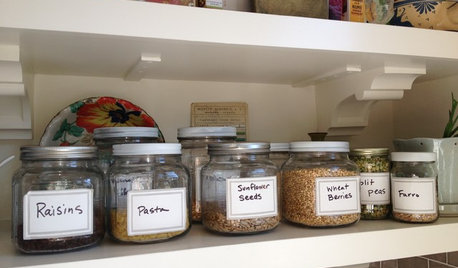

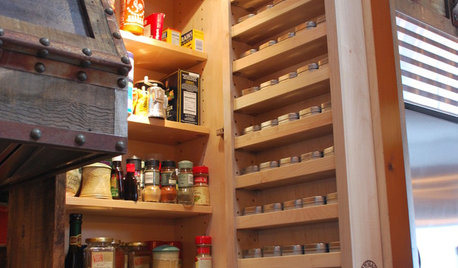

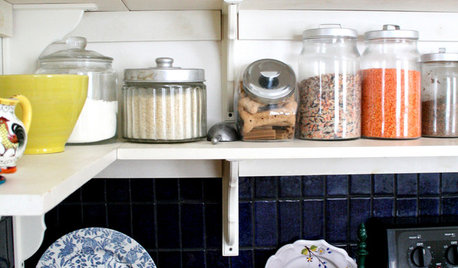
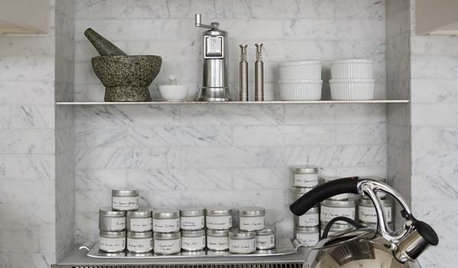
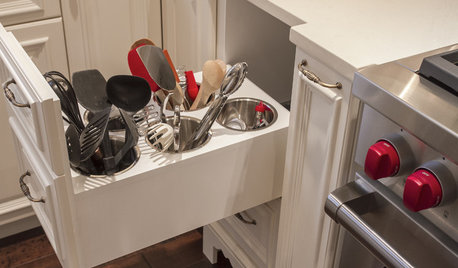
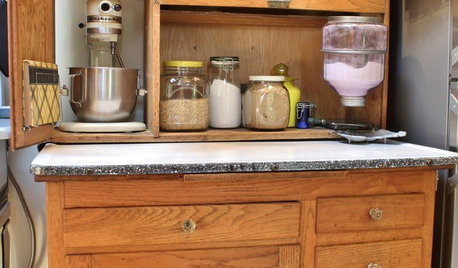
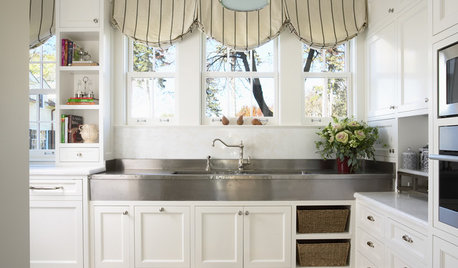
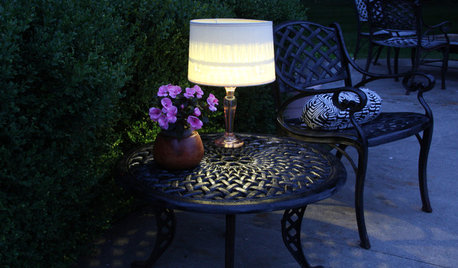






readinglady